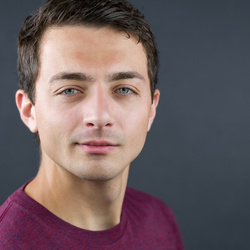Skin tones can be tricky, especially when using on-camera flash at events like weddings. The bright light often washes out the natural color, leaving skin looking pale or flat. However, there’s a quick and effective method in Lightroom to bring back those natural tones.
Coming to you from Anthony Morganti, this helpful video walks through a simple Lightroom technique to restore color to washed-out skin tones. Morganti explains that after completing your initial edits, you should focus on correcting the skin tone. The key tool here is the Tone Curve within the Masking feature. First, select your subject’s skin using the Masking tool, which automatically detects facial and body skin. Then, open the Tone Curve and start with the red curve. By placing a point in the middle of the curve and dragging it upward, you introduce a slight red hue back into the skin, compensating for the color loss caused by the flash.
Next, Morganti suggests moving to the blue curve. The blue curve is essential because it allows you to add warmth to the skin by introducing yellow tones. Like with the red curve, place a point in the middle and drag it down toward the yellow corner. This step can be done generously, as the Amount slider allows you to dial back the effect until it looks natural. The combination of these adjustments gives the skin a healthier, more natural appearance, countering the flatness caused by the flash.
Morganti demonstrates this technique across several images, each time tweaking the red and blue curves to achieve the desired effect. The beauty of this method is its flexibility. You can fine-tune the adjustments to match different lighting conditions or skin tones. While Morganti mentions that you can also use the green curve to adjust for any leftover color imbalances, he rarely finds it necessary, as the red and blue curves typically do the job well.
A crucial point Morganti makes is about editing fatigue. When working on a large batch of photos, like a wedding, it’s easy to overdo the corrections, especially after long hours of editing. He advises taking breaks to rest your eyes and return with a fresh perspective before finalizing your edits. This helps ensure that your color adjustments remain subtle and natural rather than overly strong. Check out the video above for the full rundown from Morganti.







that was actually pretty quick and easy! thanks. but I wish he demonstrated it on a flash photo since he mentioned flash photos at a wedding. sure the technique would work but he should demonstrate what he describes in his text.
It looks like you are no more than an artist with color of a brush and paints, can one really remember from the capture to the computer and with the flash also what the colors were. Wearing glasses with the Crizal coatings even makes a difference. The one important fact is even using the grey/white card or dome to calibrate the camera that is for the jpeg for the raw is all things combined, There is also the Data Color Spyder Cube which you take a capture with it the in post you sync the cube photo with the image you want, I found this to be great in the Grand Canyon where the colors of the layers of rocks were different to the bottom and now they have a new color triangle that calibrates the camera before the shot but still for the jpeg.
Years ago when Sony users were given the C1 for just $30 C1 had a white plastic plate in 2 sizes but it gave a lens correction as well as the color profile but again for the jpeg.
The Cube is like the best because it is after the fact, but when over thinking do you use facing the direction of your capture or do you face behind for you want the light hitting the cube to be the same as hitting the front of the camera.
The other conundrums are do you wear glasses with the Crizal coating or even the new blue blocker glasses so you do not get cataracts early in life a reason we wear sunglasses today.
Have you ever looked at the camera profiles that are for jpeg images but Lr and others programs have a best guess when processing your image something you should do first then the lens corrections.
It is like doing Milky Way captures it is a dark night and the human eyes can not see colors in darken areas a reason most images are very dark even the sky is grey or dark but for the yin and yang of Pegasus, this is where the cube is very handy at getting the colors in a cave as well as the brightness, yes at night there is brightness and colors.
Yes one conundrum after another conundrum every since color digital cameras. Just remember you are the artist you make it the way you see it.
The last image is when the Jekyll Island went to the new daylight street lights and bouncing off the white clouds like a light box in a studio, but still used the cube but use portrait camera profile to get the great color of the wet sand at low tide.
i feel that wearing glasses with Zeiss Blue Guard Lenses causes the colours i see to be less beautiful even though i cannot actually visibly discern the difference. i suppose it is like lossy and lossless compression where some data is actually missing
Great article very exhaustive ! Thank you